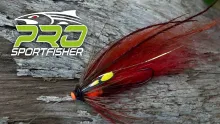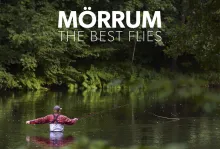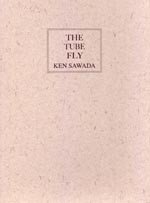Everybody in Mörrum knows the classic Ullsocken fly (“the wool sock” in Swedish). The fly was invented sometime in the 1960s by Alf Jansson, and since then it has proven to be one of the absolute top flies for Mörrum. The fly was inspired by classic Irish shrimp patterns, but simplified with a red tail, a black woollen body and three brown hackles. Since then, countless tweaks of this pattern have been fished in Mörrum, and every year the fly has its new descendants.
Ullsocken is one of the few classic Mörrum flies that keeps on getting attention, and it seems to be effective anywhere in the world where anadromous fish are to be found. Quite impressive for a fly this simple. But then again, the whole idea behind the fly is to keep it simple. Some believe that the three hackles make a special turbulent noise or movement
This modern version of Ullsocken is now the most popular one, with added weight for extra movement in the water. Make sure the hackles spread as much as possible to produce volume. A nice go-to selection of Ullsocken flies consists of double- or treble hooks in size 6-10, and some 3-8 cm long tube flies. We have had Stefan Enevoldsen from Fiskeshopen in Mörrum, behind the vise to demonstrate the tying of this effective pattern - a “must-have-in-the-box”.
Ullsocken variant
Tube: 1,85 mm Clear
Thread: Black 14/0
Weight: 5mm Brass Bead Brown Metallic
Butt: Chinese Red Uni Yarn
Rear hackle: Red cock hackle
Body: Black Antron Yarn
Mid Hackle: Brown cock hackle
Flash: Red Krystal flash
Front hackle: Brown cock hackle
Want to know more about Ahrex Hooks?
Ahrex Website: http://www.ahrexhooks.com
Ahrex Facebook: https://www.facebook.com/Ahrex-Hooks-
Instagram: https://www.instagram.com/ahrexhooks/
Ahrex Blog: https://ahrexhooks.com/blog/
- Log in to post comments







